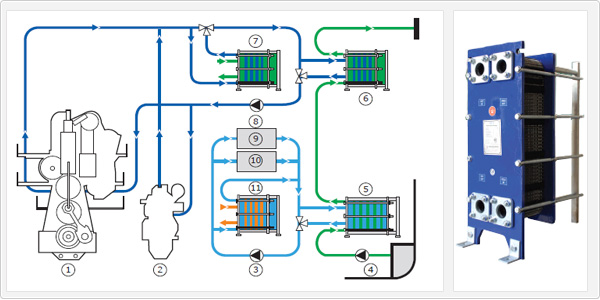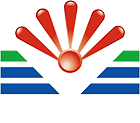Applications of Marine Aquaculture Plate Heat Exchangers
Seawater aquaculture is a major industry in the economic development of coastal areas, coastal areas by virtue of the advantageous geographical location, seawater aquaculture has a long history, mainly farming sea cucumbers, shrimps and crabs, fish and so on. Aquaculture of aquatic products on the environmental requirements are relatively high, which determines the strict requirements of seawater aquaculture on the water temperature, in this case you need seawater aquaculture plate heat exchanger to regulate the water temperature.
In general, the temperature of shrimp farming is about 30 degrees, and sea cucumbers are about 15 to 20. In order to better cultivate aquatic products, to ensure that the water temperature, many manufacturers choose plate heat exchanger to achieve such a temperature. So why choose the plate heat exchanger? This is due to the unique advantages of the plate heat exchanger.
1. High heat transfer coefficient, small temperature difference at the end: zigzagging corrugated plate to form a special channel to make the heat transfer medium even at low flow rates can occur under strong turbulence to counter-current flow, so that the heat exchanger to achieve good heat transfer effect, the temperature difference at the end can reach 1 ° C. Like many areas using geothermal wells and other low-temperature heat source, plate heat exchanger is the ideal equipment, environmental protection and energy saving, to reduce the seawater aquaculture a lot! Cost.
2. Small footprint, easy to disassemble and maintain: plate heat exchanger is compact, equipment clamped with bolts can be disassembled and cleaned at any time, easy to install and maintain.
3. Easy expansion, low investment: a major advantage of detachable plate exchange is that the heat exchanger can be disassembled at any time, and the area of the heat exchanger can be adjusted by increasing or decreasing the number of plates. Even if there is a plate through leakage, only part of the broken plate can be replaced, saving a lot of costs.

In addition to the advantages of the heat exchanger itself, attention should also be paid to the material of the plates used for the heat exchanger used in marine aquaculture. Because seawater contains chlorine ions, so the commonly used 304 material is not appropriate, considering the economic rationality, will generally use 316L or Ti plate.
Reapter Ltd., specializing in the production of marine aquaculture plate heat exchanger, accumulated sales of such products on thousands of units, to solve the customer's poor water quality, water temperature does not reach, the follow-up replacement of accessories difficult and many technical problems. The majority of aquaculture manufacturers are welcome to consult and buy.
Related information
- The actual capacity of net celebrity milk tea does not match the content. The plate heat exchanger manufacturer said: We never cut corners!
- The use of plate and shell heat exchanger industries and specific application scenarios
- Plate heat exchangers for pharmaceuticals are being used by peers with large pharmaceutical sales
- Ruipute - dedicated to the pursuit of perfect quality plate heat exchanger enterprises
- The temperature difference design of the heat exchanger
- The secret of keeping heat efficiency of plate heat exchanger
Relevant article
- Heat station supporting plate heat exchanger installation is a technical work, these points should be noted
- Sulfuric acid and other corrosive media for industrial plate heat exchanger requirements are what
- Simple and effective chemical cleaning method of coal chemical plate heat exchanger, can effectively improve efficiency
- A high-quality petrochemical plate heat exchanger in the production of what to consider
- These causes of chemical plate heat exchanger gasket aging you may not know
- Chemical plant plate heat exchanger, sulfuric acid cooling needs attention
- High-end plate heat exchanger customization, specifically for your special working conditions
- The working principle of gasket type industrial plate heat exchanger and the scenarios of its use are worth knowing in depth
- Still worrying about the wholesale price of industrial plate heat exchangers? An article to make you no longer tangled
- The original lubricant in the chemical plate heat exchanger plays so many roles!
Latest information
- Heat station supporting plate heat exchanger installation is a technical work, these points should be noted
- Sulfuric acid and other corrosive media for industrial plate heat exchanger requirements are what
- Simple and effective chemical cleaning method of coal chemical plate heat exchanger, can effectively improve efficiency
- A high-quality petrochemical plate heat exchanger in the production of what to consider
- These causes of chemical plate heat exchanger gasket aging you may not know
- Chemical plant plate heat exchanger, sulfuric acid cooling needs attention
- High-end plate heat exchanger customization, specifically for your special working conditions
- The working principle of gasket type industrial plate heat exchanger and the scenarios of its use are worth knowing in depth
- Still worrying about the wholesale price of industrial plate heat exchangers? An article to make you no longer tangled
- The original lubricant in the chemical plate heat exchanger plays so many roles!








